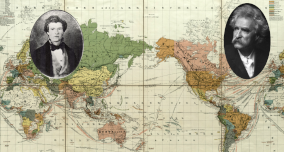Nathan Jones purchased the township of East Hoosac at auction in 1762 from the state for £3,200. In 1778, the town was officially incorporated as Adams, named in honor of Samuel Adams, a revolutionary leader and signer of the Declaration of Independence. Much of the land had been subdivided into 100-acre (0.40 km2) and 200-acre (0.81 km2) lots. These were mostly farms with frontage on the Hoosic River, which over time would provide water power for woolen, cotton, lumber, and plastic mills.
Early settlers in the 1760s included a group of Quakers, many of whom migrated together from Smithfield, Rhode Island. The Quaker civil rights leader, abolitionist, and suffragist Susan B. Anthony was born in 1820 in Adams, and her family lived there until she was six. They moved west into New York, and later moved again to western New York.
The town's population declined from 1810 to 1820 as farmers moved west for better soil. The War of 1812 had the unintended result of stimulating development of the textile industry in the United States because British textiles were no longer available. In 1814, the Adams South Village Cotton Manufacture Company opened. With the construction of a number of mills on the Hoosic River, the demand for labor increased greatly, and Adams' population more than doubled to 4,000 between 1820 and 1835. Growth in both halves of Adams also was stimulated by the opening of the Hoosac Tunnel in 1875. In the late 1800s, during the expansion of the cotton mills, four large brick buildings were constructed on Park Street: the P. J. Barrett Block, Jones Block, Armory Block, and the Mausert Block, opposite the Town Hall. They were used for retail stores and offices.
Twain and GW Cable lectured in the Town Hall December 1, 1884
